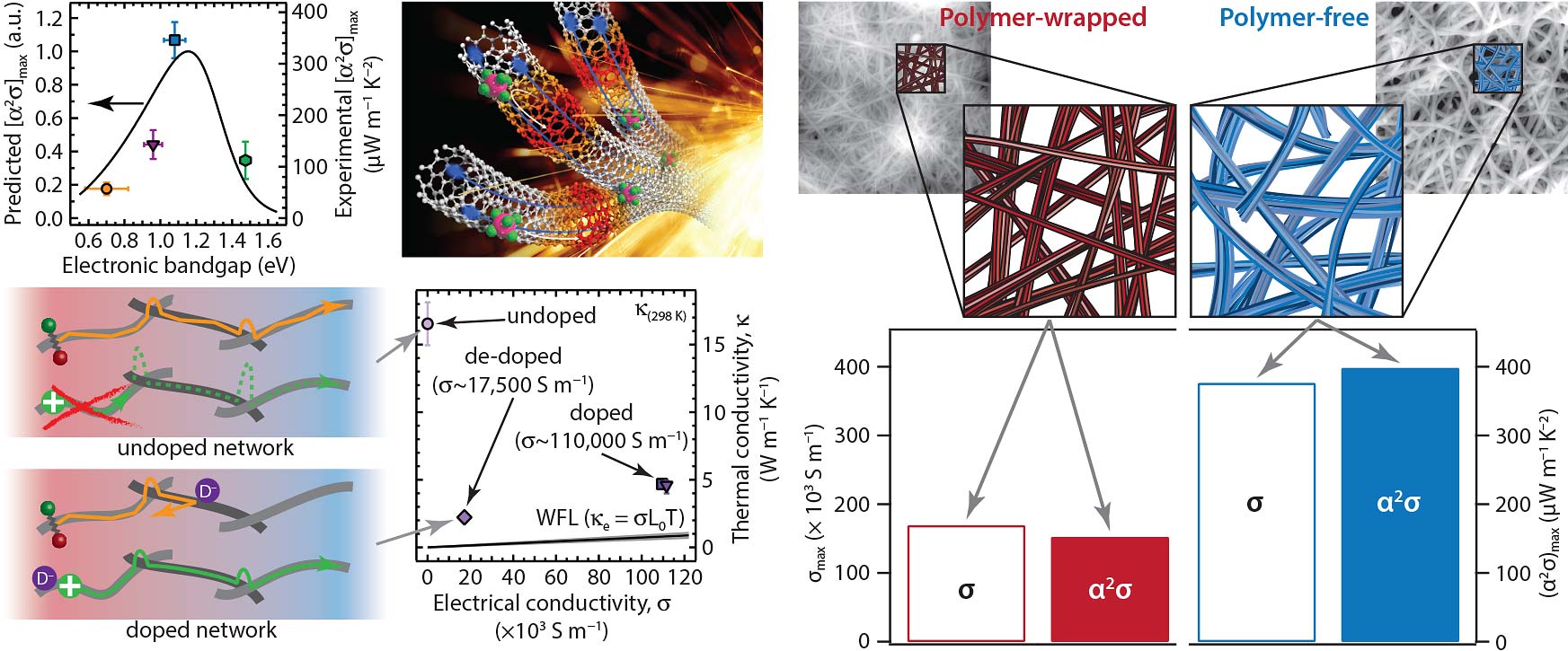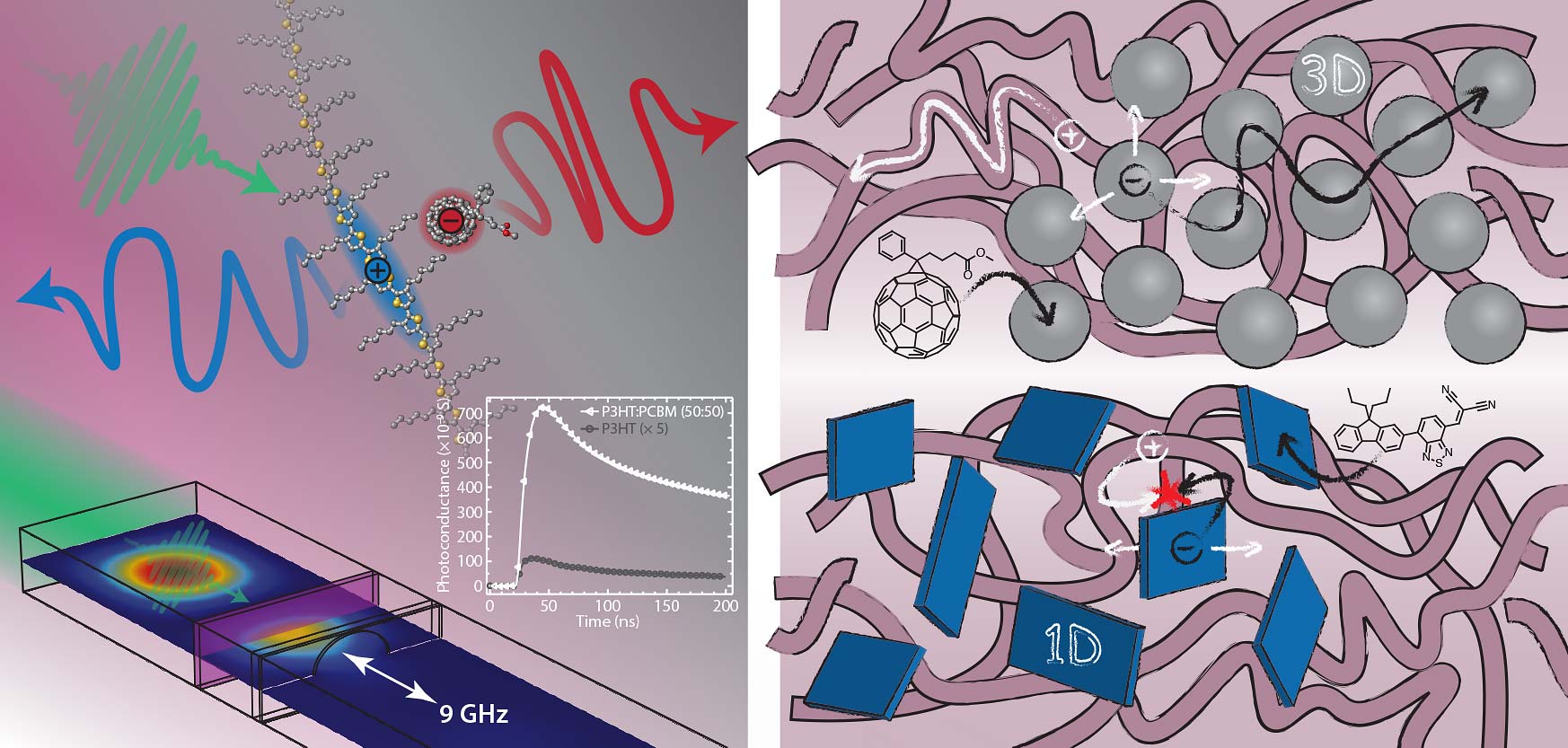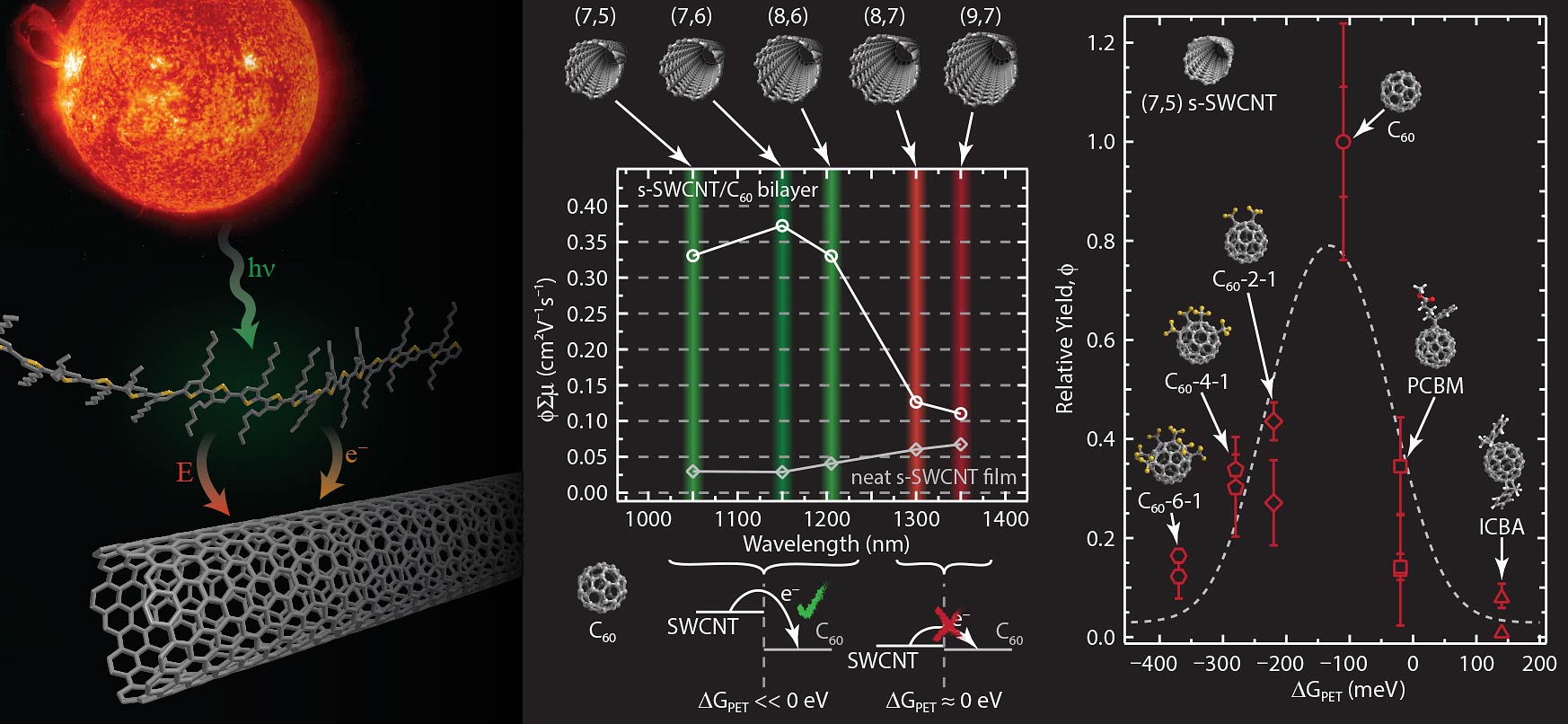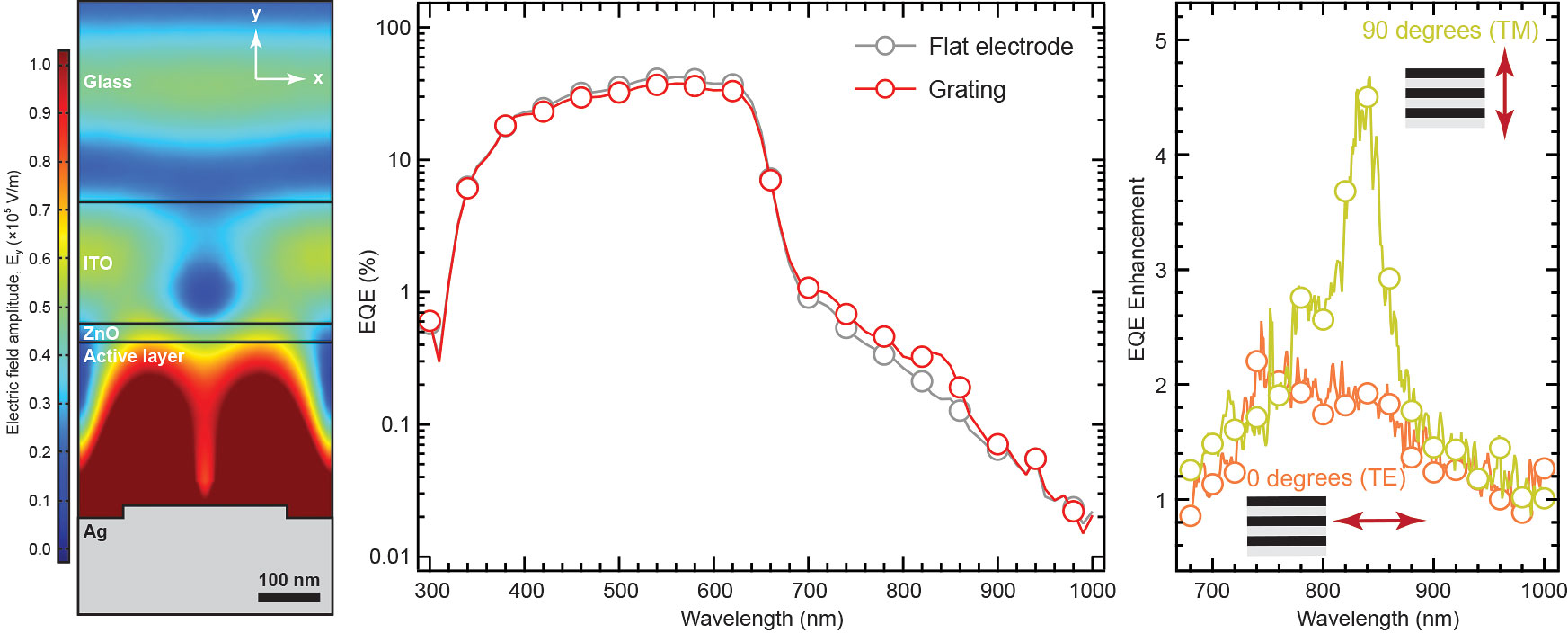
Andrew Ferguson
Group Manager: Spectroscopy & Photoscience
Andrew.Ferguson@nrel.gov
303-384-6637
 https://orcid.org/0000-0003-2544-1753
https://orcid.org/0000-0003-2544-1753
Andrew Ferguson received his doctorate in physical chemistry from Imperial College, researching the photophysical properties of molecular organic semiconductors under the supervision of Professor Tim Jones in the Centre for Electronic Materials and Devices (CEMD).
After his graduate studies, Ferguson joined Garry Rumbles' group at NREL as a postdoctoral researcher, investigating the fate of excitons and carriers in organic photovoltaic (OPV) material systems, such as conjugated-polymer:fullerene blends, using time-resolved microwave conductivity (TRMC) as well as time-resolved and steady-state photoluminescence spectroscopy. He is now a research scientist in the Chemistry and Nanoscience Center, exploring exciton, carrier, and heat transport in nanoscale and organic semiconductors.
Research Interests
-
Tailored Carbon Nanotube Thermoelectric Materials
Semiconducting single-walled carbon nanotubes (s-SWCNTs) have recently begun to realize the potential of nanoscale semiconductors and interfaces for high-performance organic thermoelectric (TE) materials. We work to identify the factors intrinsic to the s-SWCNTs themselves, as well as those linked to morphological considerations of s-SWCNT networks, to understand and control their TE properties. By carefully tuning the charge-carrier density and s-SWCNT network composition, we have identified that: 1) an optimum electronic bandgap appears to exist for s-SWCNT TE materials, 2) charge-transfer doping results in simultaneous enhancement of carrier transport and inhibition of phonon transport, 3) the thermopower of s-SWCNTs networks can be large and is relatively independent of carrier density, and 4) the removal of residual polymer and reduction in s-SWCNT bundle size improves carrier transport and TE performance. These advances pave the way for incorporating tailored s-SWCNTs into flexible TE composites and textiles.

-
Evaluation and Understanding of Organic Photovoltaics
Organic photovoltaics are unique, because they represent a class of photovoltaics with unprecedented chemical tunability, allowing the optical and electronic properties to be tailored to specific niche applications such as solar windows, textiles, and building materials. In addition to the chemical flexibility, a better fundamental understanding of the factors governing carrier generation and recombination has accelerated the progress toward a power conversion efficiency of 13%. At NREL, we employ a unique suite of spectroscopic capabilities to probe these photophysical processes and correlate them with OPV device performance. This has allowed us to study effect of 1) mixing and microstructure, 2) chemical structure of novel fullerene derivatives and non-fullerene electron acceptors, and 3) active-layer composition and processing on the device performance.

-
Interfacial Photodynamics in Organic Semiconductor Systems
In light-harvesting organic semiconductor systems, such as those employed in OPV, the nature of the interface between two dissimilar components often governs the observed photophysics. By exploiting the chemical tunability described above, in conjunction with sensitive spectroscopic techniques, we are able to explore questions concerning how the chemical and electronic properties of this interface control the transfer of energy (excitons) and charge carriers across the interface. We have exploited explored interfacial photoinduced electron transfer and recombination in blends of conjugated polymers with prototypical fullerene derivatives and SWCNTs, including the impact that metallic SWCNTs have on the photophysics. We have subsequently demonstrated that the efficiency of photoinduced electron transfer in s-SWCNT/fullerene bilayers can be limited by the electronic properties of both the s-SWCNTs and the fullerene derivatives, and that carrier recombination at the s-SWCNT-fullerene interface is limited by capture and emission at traps states. Finally, we have demonstrated that s-SWCNT layers can act as efficient hole-extraction layers in efficient metal-halide perovskite photovoltaics due to a rapid hole-extraction process and slow back transfer that even enhances electron extraction at the opposite contact.

-
Novel Photophysics in Organic Semiconductor Systems
The complex excited-state manifolds exhibited by many organic semiconductors make them interesting for probing novel photophysical mechanisms that may enhance their performance in solar photoconversion schemes. We are interested in understanding how the chemical and solid-state structures impact these excited-state manifolds, to control processes such as singlet fission (SF) or triplet-triplet annihilation upconversion (TTA-UC). In addition, we are investigating how nanostructured metal gratings can couple to the excited-state manifold to enhance photon harvesting or create new hybrid excited states with interesting photophysical properties.

Education
- Ph.D. Physical Chemistry, Centre for Electronic Materials and Devices, Imperial College London, London, UK
- Dipl. Chemistry – Electronic Materials, Imperial College London, London, UK
- M. Sci. Chemistry, Imperial College London, London, UK
Professional Experience
- Senior Scientist, NREL, Chemistry and Nanoscience Center, 2013–present
- Scientist, NREL, Chemical and Biosciences Center, and Chemistry and Nanoscience Center, 2009–2013
- Postdoctoral Researcher, NREL, Chemical & Biosciences Center, 2006–2009
- Postdoctoral Researcher, Imperial College London, 2005–2006
Featured Work
-
"Large n- and p-Type Thermoelectric Power Factors from Doped Semiconducting Single-Walled Carbon Nanotube Thin Films," Energy & Environmental Science (2017)
-
"Polymer-Free Carbon Nanotube Thermoelectrics with Improved Charge Carrier Transport and Power Factor," ACS Energy Letters (2016)
-
"Tailored Semiconducting Carbon Nanotube Networks with Enhanced Thermoelectric Properties," Nature Energy (2016)
-
"Tuning the Driving Force for Exciton Dissociation in Single-Walled Carbon Nanotube Heterojunctions," Nature Chemistry (2016)
-
"Efficient Charge Extraction and Slow Recombination in Organic–Inorganic Perovskites Capped with Semiconducting Single-Walled Carbon Nanotubes," Energy & Environmental Science (2016)
-
"Trap-Limited Carrier Recombination in Single-Walled Carbon Nanotube Heterojunctions with Fullerene Acceptor Layers," Physical Review B (2015)
-
"Additive-Assisted Supramolecular Manipulation of Polymer:Fullerene Blend Phase Morphologies and Its Influence on Photophysical Processes," Materials Horizons (2014)
-
"Free Carrier Generation in Organic Photovoltaic Bulk Heterojunctions of Conjugated Polymers with Molecular Acceptors: Planar versus Spherical Acceptors," ChemPhysChem (2014)
-
"Fullerenes and Carbon Nanotubes as Acceptor Materials in Organic Photovoltaics," Materials Letters (2013)
-
"Revealing the Dynamics of Charge Carriers in Polymer:Fullerene Blends Using Photoinduced Time-Resolved Microwave Conductivity," Journal of Physical Chemistry C (2013)
-
"Dark Carriers, Trapping, and Activation Control of Carrier Recombination in Neat P3HT and P3HT:PCBM Blends," Journal of Physical Chemistry C (2011)
-
"Ultrasmooth, Large-Area, High-Uniformity, Conductive Transparent Single-Walled-Carbon-Nanotube Films for Photovoltaics Produced by Ultrasonic Spraying," Advanced Materials (2009)
-
"Performance of Bulk Heterojunction Photovoltaic Devices Prepared by Airbrush Spray Deposition," Applied Physics Letters (2008)
-
"Dramatic Increases in the Lifetime of the Er3+ Ion in a Molecular Complex Using a Perfluorinated Imidodiphosphinate Sensitizing Ligand," Journal of the American Chemical Society (2005)
Share

